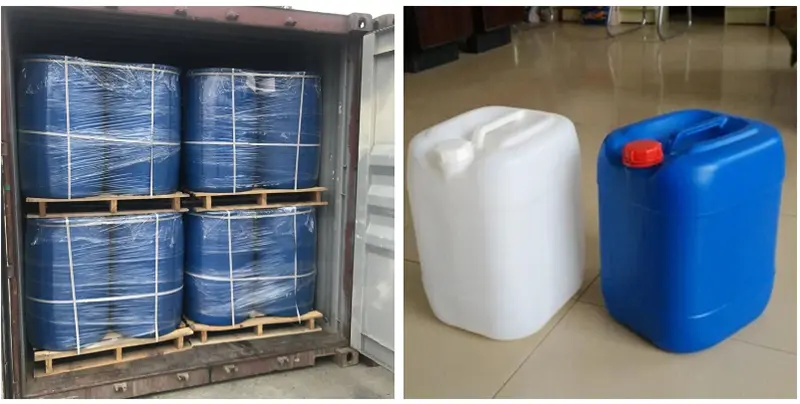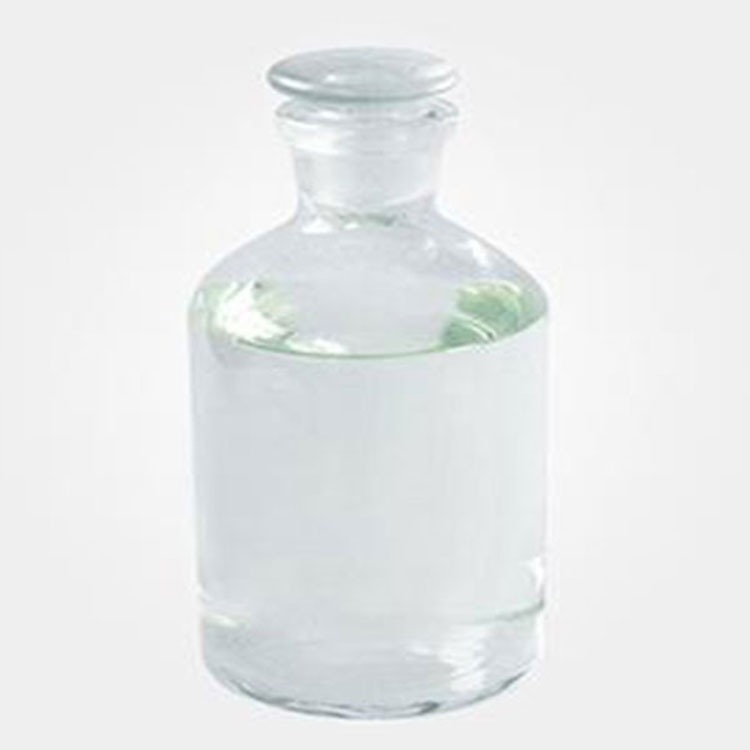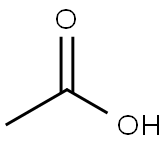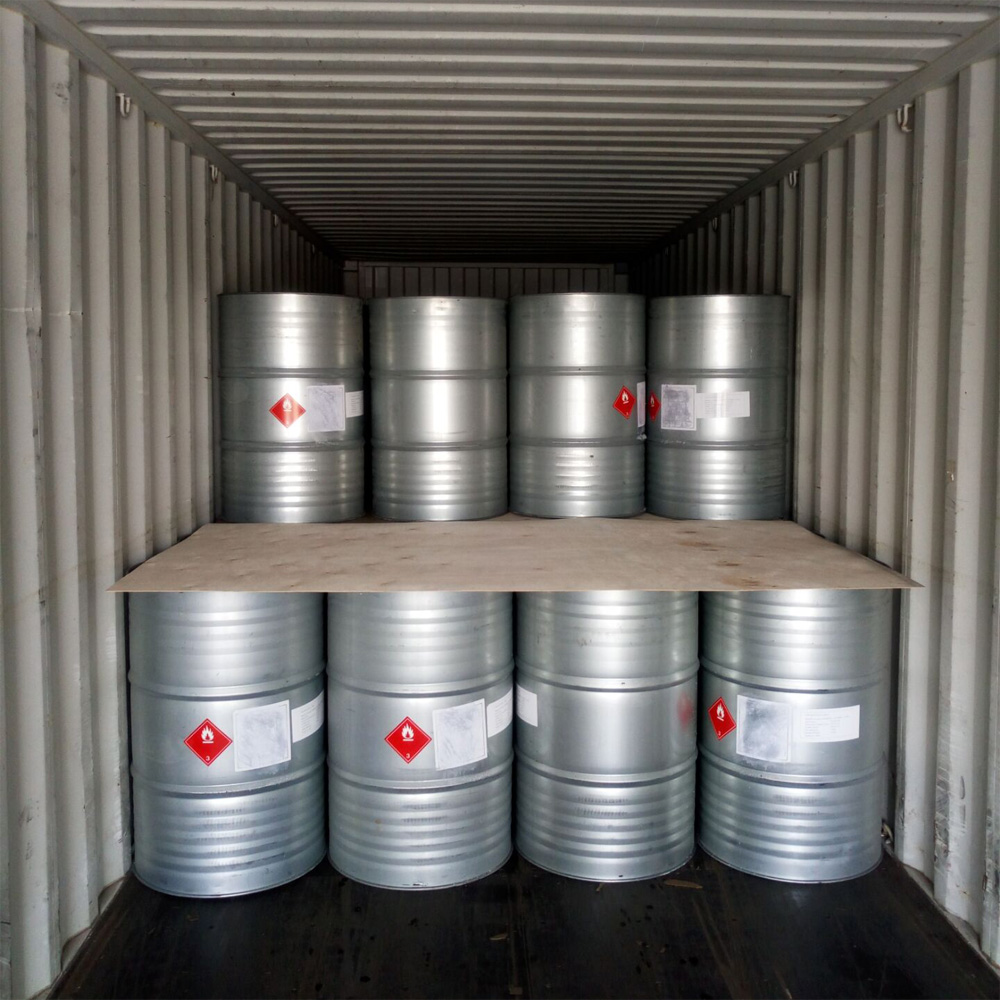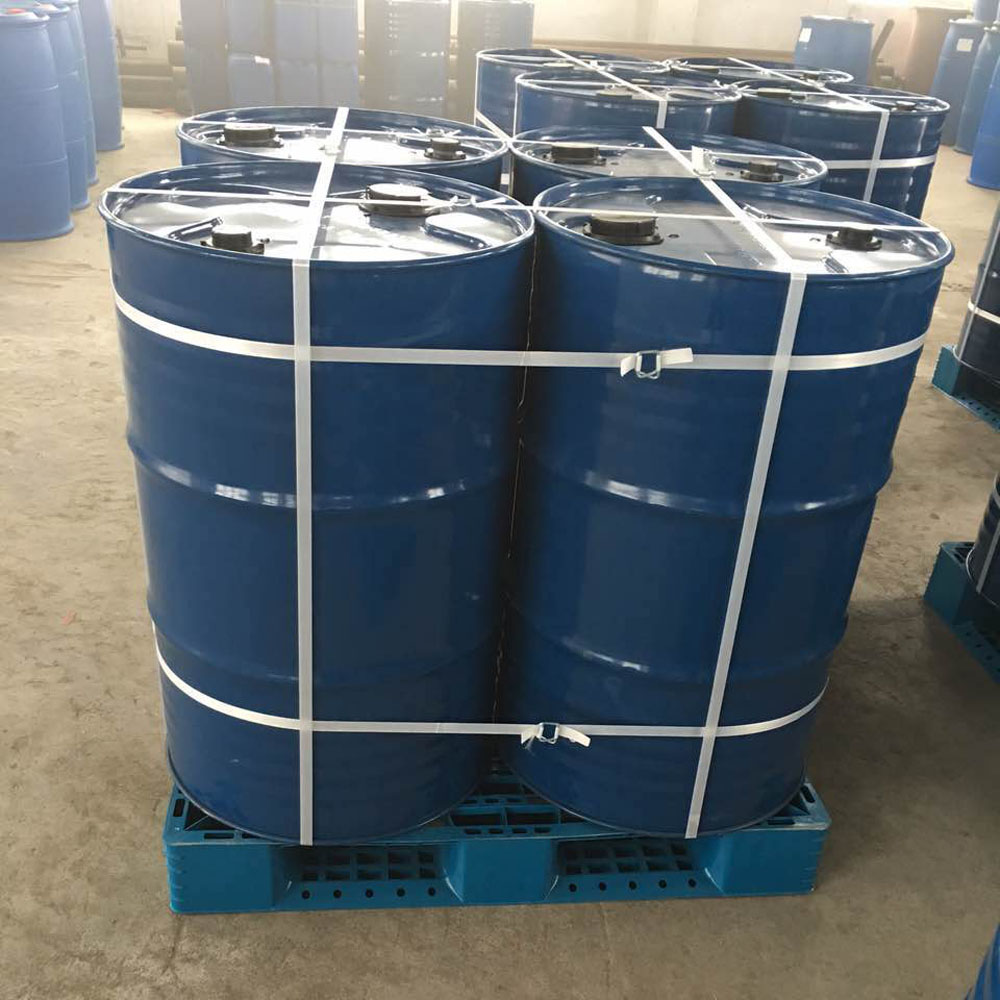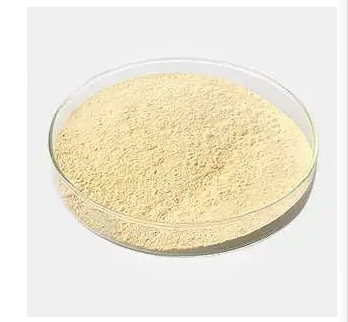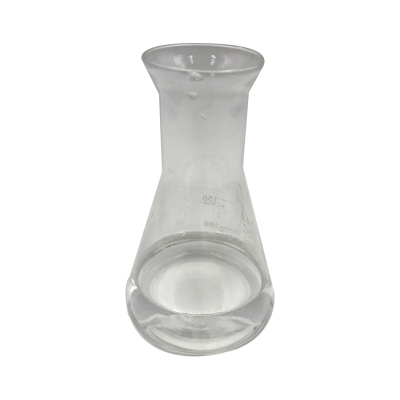Acetic acid CAS#64-19-7
Acetic acid CAS#64-19-7 Promotion Season Now in Store and Free Sample for Testing with Factory Price
Chemical Name:Acetic acid
CAS No64-19-7
Molecular Formula:C2H4O2
Molecular weight:60.05
Sample: Available
Mode of Transportation
1. By Air, fast but expensive.
2. By Sea, usual and economy.
3. By Train, suit for middle Asia countries.
4. By Express, suit for small package.
We only provide highest quality goods available, accompanied by after support!
Products Description of Acetic acid CAS#64-19-7
Acetic acid, commonly known as acetic acid (AcOH), is named after the main component of vinegar and is one of the most important fatty acids. It generally exists in many plants in free form or in the form of esters in nature. Molecular formula CH3COOH. The brewing and use of vinegar has a history of thousands of years. There are records of vinegar making in ancient China. However, concentrated acetic acid was successfully developed by Stahl in 1700. Pure acetic acid is a colorless liquid with a pungent taste. Melting point 16.6℃, boiling point 117.9℃, relative density 1.049 (20/4℃). Soluble in water, ethanol, glycerol, ether and carbon tetrachloride; insoluble in carbon disulfide. Anhydrous acetic acid solidifies into ice at low temperature, commonly known as glacial acetic acid. It is corrosive. It is a weak organic acid with the general properties of acid and can undergo esterification reaction with alcohol.
Acetic acid Chemical Properties
Melting point | 16.2 °C(lit.) |
Boiling point | 117-118 °C(lit.) |
density | 1.049 g/mL at 25 °C(lit.) |
vapor density | 2.07 (vs air) |
vapor pressure | 11.4 mm Hg ( 20 °C) |
refractive index | n20/D 1.371(lit.) |
FEMA | |
Fp | 104 °F |
storage temp. | Store below +30°C. |
solubility | alcohol: miscible(lit.) |
form | Solution |
pka | 4.74(at 25℃) |
Specific Gravity | 1.0492 (20℃) |
color | colorless |
Odor | Strong, pungent, vinegar-like odor detectable at 0.2 to 1.0 ppm |
PH | 3.91(1 mM solution);3.39(10 mM solution);2.88(100 mM solution); |
PH Range | 2.4 (1.0M solution) |
Odor Threshold | 0.006ppm |
Odor Type | acidic |
explosive limit | 4-19.9%(V) |
Water Solubility | miscible |
λmax | λ: 260 nm Amax: 0.05 |
Merck | 14,55 |
JECFA Number | 81 |
BRN | 506007 |
Henry's Law Constant | 133, 122, 6.88, and 1.27 at pH values of 2.13, 3.52, 5.68, and 7.14, respectively (25 °C, Hakuta et al., 1977) |
Dielectric constant | 4.1(2℃) |
Exposure limits | TLV-TWA 10 ppm ~25 mg/m3) (ACGIH, OSHA, and MSHA); TLV-STEL 15 ppm (37.5 mg/m3) (ACGIH). |
Stability: | Volatile |
LogP | -0.170 |
CAS DataBase Reference | 64-19-7(CAS DataBase Reference) |
NIST Chemistry Reference | Acetic acid(64-19-7) |
EPA Substance Registry System | Acetic acid (64-19-7) |
Safety Information
Hazard Codes | C,Xi |
Risk Statements | 34-42-35-10-36/38 |
Safety Statements | 26-36/37/39-45-23-24/25 |
RIDADR | UN 1792 8/PG 2 |
WGK Germany | 3 |
RTECS | NN1650000 |
F | 1-8-10 |
Autoignition Temperature | 426 °C |
TSCA | Yes |
HazardClass | 8 |
PackingGroup | II |
HS Code | 29152100 |
Hazardous Substances Data | 64-19-7(Hazardous Substances Data) |
Toxicity | LD50 in rats (g/kg): 3.53 orally (Smyth) |
IDLA | 50 ppm |
Product Application of Acetic acid CAS#64-19-7
Acetic acid is a bulk chemical product and one of the most important organic acids. It is mainly used to produce vinyl acetate, acetic anhydride, acetate and cellulose acetate. Polyvinyl acetate can be made into films and adhesives, and is also the raw material for synthetic fiber vinylon. Cellulose acetate can be used to make rayon and movie film. Acetic acid esters formed by lower alcohols are excellent solvents and are widely used in the paint industry. Acetic acid is a good solvent for oxidation reactions (for example, it is used to oxidize p-xylene to produce terephthalic acid). Acetic acid is an important raw material in the organic synthesis industry, used to synthesize acetic anhydride, diethyl malonate, ethyl acetoacetate, halogenated acetic acid, etc., and can also be used to make drugs such as aspirin and pesticide 2,4-D. It is also used to produce acetates, such as salts of metals such as manganese, sodium, lead, aluminum, zinc, and cobalt, which are widely used as catalysts and additives in fabric dyeing and leather tanning industries. For example, aluminum acetate is a mordant, a disinfectant and sword-collecting agent for medical use; lead acetate is a paint color lead white; and lead tetraacetate is an organic synthesis reagent. It can oxidize 1,2-diols to aldehydes or ketones; sodium acetate and potassium acetate are commonly used buffers in biochemistry. In the food industry, acetic acid is used as an acidulant, flavor enhancer and spice. When making synthetic vinegar, acetic acid is diluted with water to a concentration of 4-5, and various flavoring agents are added. The flavor is similar to that of alcohol, and the manufacturing time is short and the price is cheap. Acetic acid is highly corrosive. It irritates and causes blisters on the skin. It is a secondary organic acid corrosive item.
Factory and Equipment Show
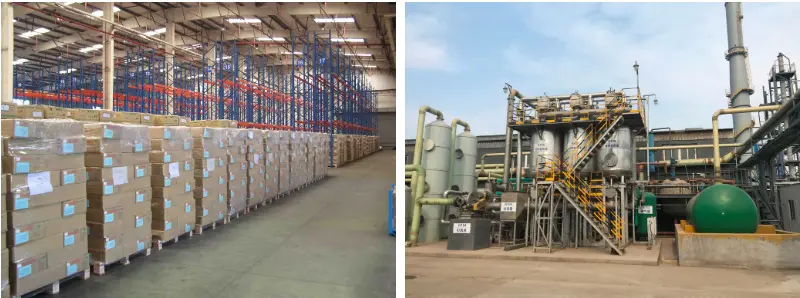

Fast delivery time
Inventory 2-3 working days New production 7-10 working days
